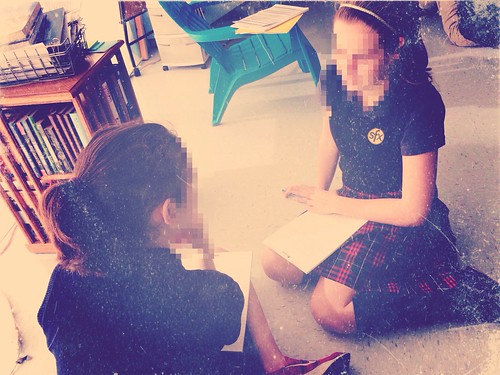Last week I wrote about my plans for selecting and revising a scene from our NaNoWriMo novels to include in a class anthology.
As with any lesson, there were changes and improvements along the way. One class finished choosing and started revising last week, and the other just picked their scene yesterday. One class followed the lesson plan pretty closely and the other moved in fits and starts.
That's how classrooms work.
We started seated at our imaginary rug. I reminded them what an anthology is, and said that this year I'm determined to put one together for our novel excerpts. I asked them to make a list of scenes, or moments, from their stories. I said they could even include scenes that they hadn't yet written but were part of their story. I sent them back to their seats to make their lists with their novels open in front of them, and I started my own list.
It was hard. Really, really hard. I'd decided to change my set-up completely, so I didn't want to use any of those scenes. I ended up with a list of scenes that I still needed to write.
This was equally hard for some of my students. Most of us look back on our NaNo drafts with a sense of accomplishment and also a sense that "this is not good." We might love our stories, but we know how much work there is to do before they reach the ideal in our minds.
Many students were also stuck on length. Ask them to pick a conversation between characters, they ask how long it should be. Ask them for a scene about setting, they ask how long it should be. I told them repeatedly that it was irrelevant at this point, but I don't think they believed me. I still refused to answer.
Once we each had at least five scenes, we came back to the rug. I showed them a clip of Donald Graves from Children Want to Write: Donald Graves and the Revolution in Children's Writing by Thomas Newkirk and Penny Kittle. In the clip, Donald Graves shares his list of writing ideas and then asks students to do the same. I shared my list and then asked students to share theirs with the person next to them. After a few minutes of talk we shared our top two with the group, and returned to our computers to locate those scenes in our drafts. We made electronic copies (so they wouldn't be working with their full novel every day) and printed out the pages for our writing folders.
Next step: Remind them again that revising is more than moving the commas around.

No comments:
Post a Comment